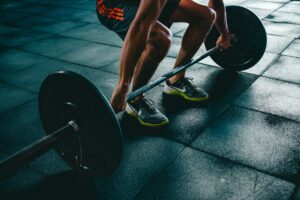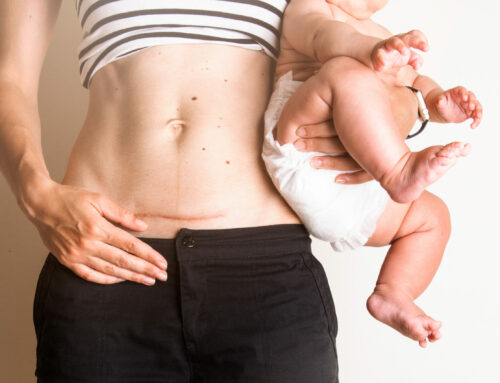Deadlifting is one of the most effective exercises for building strength, power, and overall fitness. However, it also comes with a high risk of injury if not performed correctly. Many gym-goers experience back pain after deadlifting, which can range from mild discomfort to severe, debilitating pain. Ignoring this pain or pushing through it can lead to long-term damage.Physiotherapy is an essential part of recovery and injury prevention.
In this blog post, we will explore the common causes of back pain after deadlifting, how physiotherapy helps in recovery, and the best strategies to prevent future injuries.
Why Does You get back pain after Deadlifting?

Experiencing back pain after deadlifting can be frustrating, especially if you are committed to your fitness goals. Here are some of the most common reasons behind post-deadlift back pain:
1. Poor Lifting Technique
Deadlifting with improper form is one of the leading causes of back pain. Common mistakes include:
- Rounding the lower back
- Not engaging the core properly
- Lifting with the back instead of the legs
- Hyperextending the back at the top of the lift
Incorrect technique places excessive stress on the lower back, leading to strains, disc injuries, and muscle imbalances.
2. Weak Core and Stabilizing Muscles
Your core muscles, including the tummy muscles in the front and the deep muscles of the lower back, play a crucial role in stabilizing your spine during deadlifts. If these muscles are weak, the load is transferred to the joints and ligaments, increasing the risk of injury.
3. Overloading the Barbell
Lifting too much weight without adequate preparation can force your body into compensatory movement patterns, putting unnecessary strain on your lower back.
4. Lack of Mobility and Flexibility
Tight hamstrings, hip flexors, or limited upper back mobility can restrict proper movement during a deadlift, increasing stress on the lower back.
5. Pre-Existing Conditions
If you have an underlying condition like disc bulges, sciatica, or facet joint dysfunction, deadlifting can aggravate the issue and result in pain and inflammation.
How Physiotherapy Helps in Recovery from Back Pain after deadlifting?
Physiotherapy is an essential tool in both rehabilitation and prevention of deadlift-related back injuries. A professional physiotherapist assesses the root cause of your pain and designs a tailored treatment plan to promote healing and prevent recurrence.
1. Accurate Diagnosis and Assessment

A physiotherapist will conduct a thorough assessment, including:
- Assessing your posture and movement patterns
- Identifying muscle imbalances or weaknesses
- Evaluating joint mobility and flexibility
- Performing special tests to rule out serious conditions like disc herniation
This helps in pinpointing the exact issue causing your back pain.
2. Pain Relief Techniques
Physiotherapists use a combination of techniques to reduce pain, such as:
- Manual Therapy: Hands-on techniques like trigger point therapy, joint mobilization, and spinal manipulation to reduce muscle tension and improve mobility.
- Dry Needling : Targeting trigger points with needles to release muscle tension and improve blood circulation.

3. Strengthening and Rehabilitation Exercises
A physiotherapist will prescribe targeted exercises to strengthen weak muscles and improve spinal stability. These may include:
- Core activation exercises (e.g., planks, dead bugs, bird dogs)
- Glute strengthening (e.g., hip thrusts, glute bridges)
- Lower back endurance training (e.g., back extensions, reverse hypers)
- Mobility drills to improve hip and thoracic spine movement
These exercises help restore proper muscle activation and movement patterns to prevent re-injury.
4. Posture and Movement Correction
Physiotherapists assess and correct postural imbalances that may be contributing to your back pain. This includes:
- Teaching proper hip hinge mechanics for safer deadlifts
- Addressing anterior pelvic tilt or excessive lumbar extension
- Improving spinal alignment during lifts
5. Education and Injury Prevention Strategies
A crucial part of physiotherapy is educating you on proper lifting techniques, warm-ups, and recovery protocols. Your physiotherapist may also provide guidance on:
- Bracing techniques to protect your spine while lifting
- Breathing patterns to improve intra-abdominal pressure
- Optimal warm-up and cooldown routines
How to Prevent Back Pain After Deadlifting
While physiotherapy plays a key role in recovery, incorporating smart training strategies can help you avoid injury in the first place.
1. Perfect Your Deadlift Technique
Proper form is crucial to preventing injury. Focus on:
- Keeping a neutral spine throughout the lift
- Engaging your core and glutes before lifting
- Driving through your heels, not your lower back
- Keeping the barbell close to your body at all times
Consider working with a coach or recording your lifts to identify technique flaws.
2. Strengthen Your Core and Posterior Chain
Weak core and posterior chain muscles (glutes, hamstrings, lower back) make your spine vulnerable to injury. Include accessory exercises like:
- Romanian deadlifts
- Hip thrusts
- Reverse hypers
- Planks and anti-rotational core work
3. Warm-Up and Cool Down Properly

Never skip your warm-up! A dynamic warm-up prepares your body for lifting and reduces the risk of injury. Try:
- Foam rolling tight muscles
- Hip mobility drills (e.g., hip circles, lunges)
- Glute activation exercises
Post-workout, stretching and mobility work help relieve tension and maintain flexibility.
4. Progress Weight Gradually
Avoid ego lifting! Gradually increase your weights, sets, and reps to allow your body to adapt safely.
5. Listen to Your Body
If you feel pain during or after deadlifting, stop and reassess. Ignoring pain can lead to chronic injuries that require longer recovery periods.
When to See a Physiotherapist for Back Pain
If your back pain after deadlifting:
- Persists for more than a few days
- Is sharp, radiating, or worsens with movement
- Is accompanied by numbness, tingling, or weakness in the legs
- Prevents you from training or performing daily activities
Then it’s time to consult a physiotherapist for a proper assessment and treatment plan.
Conclusion
Back pain after deadlifting can be frustrating, but it doesn’t have to stop you from lifting. Physiotherapy provides a comprehensive approach to recovery by addressing pain, strengthening weak areas, and improving movement mechanics. By incorporating proper technique, progressive training, and injury prevention strategies, you can continue training pain-free and achieve your strength goals safely.
If you’re struggling with back pain from deadlifting, don’t wait for it to worsen. Consult a physiotherapist today to get back to lifting stronger and safer!




